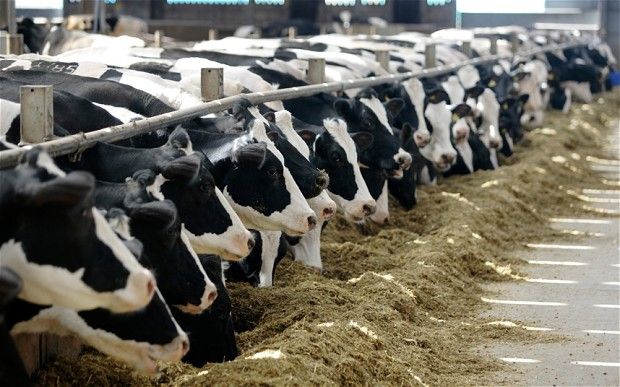A fresh data probe into climate journalism has landed with a blunt message for Africa: the sector most responsible for a third of the planet’s greenhouse gases is being treated as an afterthought. Sentient Media’s analysis, found that of 940 recent climate stories across 11 major U.S. outlets, fewer than 4 percent mentioned animal agriculture, and only 36 pieces explicitly discussed meat production, despite livestock driving a majority of food-system emissions. That silence matters because it shapes which solutions make it into public debate and which do not.
Agri-food systems account for roughly one-third of global greenhouse gas emissions when you tally on-farm outputs, land-use change and the post-farm supply chain; within that envelope, animal-based production, ruminant livestock in particular, contributes a disproportionate share of the damage. The technical contours are familiar to specialists: methane from enteric fermentation and manure, nitrous oxide from fertilized feed crops, and carbon losses when forests are cleared for pasture or feed production together make livestock an outsized climate problem.
The continent’s agricultural emissions have been rising; FAO data indicate that in 2018 Africa’s agriculture sector produced about 2.2 gigatonnes CO₂-equivalent, roughly 24 percent of global agricultural emissions, an upward trend linked to both population growth and intensifying production systems. That footprint is concentrated in methane and in land-use changes whose carbon costs are long-lived. In practice this means that policy choices about pasture, feed and smallholder intensification are not abstract environmental debates but fiscal and development decisions that affect national greenhouse inventories and the value of standing forests.
On the ground the numbers vary dramatically; Per-capita meat supply in East Africa is low by global standards: Ethiopia’s per-person meat supply is around 7 kilograms a year, while Kenya sits nearer 15–16 kg; by contrast South Africa’s per-capita meat availability is several times higher, reflecting different incomes and diets. Those gaps matter because they point to where demand growth is likely to expand emissions and where policy levers can be sharpened. In countries where consumption is rising rapidly, a failure to steer the livestock transition now will lock in emissions-intensive systems for decades, while in lower-consumption economies there is still scope to pursue low-carbon pathways as diets and incomes change.
However, public understanding and political debate in many African capitals do not reflect this calculus. Journalists and newsrooms, already stretched and under pressure, tend to prioritize weather events, policy announcements and headline emissions from energy and transport. The Sentient Media study suggests this pattern is global; in Africa it translates into policy being less likely to confront livestock’s role in deforestation, methane release and land competition. That gap is consequential: agriculture remains a primary employer across large parts of the continent and a central element of food security, so messaging that ignores tradeoffs risks provoking backlash and foreclosing practical reforms.
What would those practical reforms look like? The technical toolbox is increasingly well defined. Tackling methane from ruminants, through improved feed quality, targeted feed additives, better genetics and manure management, offers fast climate wins because methane is short-lived in the atmosphere. The FAO and other researchers point to proven interventions and to innovation pathways that can cut emissions intensity while enhancing productivity.
Elsewhere, boosting yields on existing agricultural land, restoring degraded pasture, and redirecting subsidies away from expansionary incentives have shown promise in reducing the pressure to clear forests. A notable modelling result from the World Resources Institute suggests that if high-consumption countries cut ruminant meat to roughly 1.5 burgers per person per week, the world would nearly eliminate the need for additional agricultural expansion even under a 10-billion-people scenario, illustrating how demand-side shifts in wealthy markets can relieve land pressure globally, including in Africa.
Those interventions, however, collide with political realities. Diet and food production are culturally charged; governments are wary of appearing to dictate eating habits. Industry players also actively shape narratives: past episodes show coordinated pushback to scientific studies that link meat consumption to environmental harm. The net effect is a media environment that too often frames food as a lifestyle choice rather than a systemic climate driver, making it harder for policymakers to mount defensible, equitable transitions for farmers and pastoralists.
Read also: Civil Society unveils priority actions to curb deforestation finance ahead of COP30
Reporting that connects diet, livestock and land-use to measurable emissions will strengthen policy coherence and help mobilize finance for low-carbon transition measures. Investment must target the kinds of capacity that reduce emissions without undermining livelihoods, extension services that improve feed and herd management, public financing that rewards restoration rather than clearance, and methane mitigation pilots scaled through public-private partnerships. At the same time, donors and regional development banks need to support robust measurement systems; accurate inventories and verification are the preconditions for performance-based finance that pays communities for keeping trees standing.
The Sentient Media finding is therefore not just a media critique; it is a warning. If journalists fail to illuminate how meat and land use sit at the heart of the climate equation, the policy choices and investments that follow will be incomplete. For Africa, where millions depend on both livestock and forests, the cost of that blind spot could be measured in lost carbon, lost biodiversity and lost livelihoods. Greater analytical reporting, combined with targeted public policy and finance, would reframe livestock from a side issue into a central piece of the continent’s low-carbon development puzzle.






